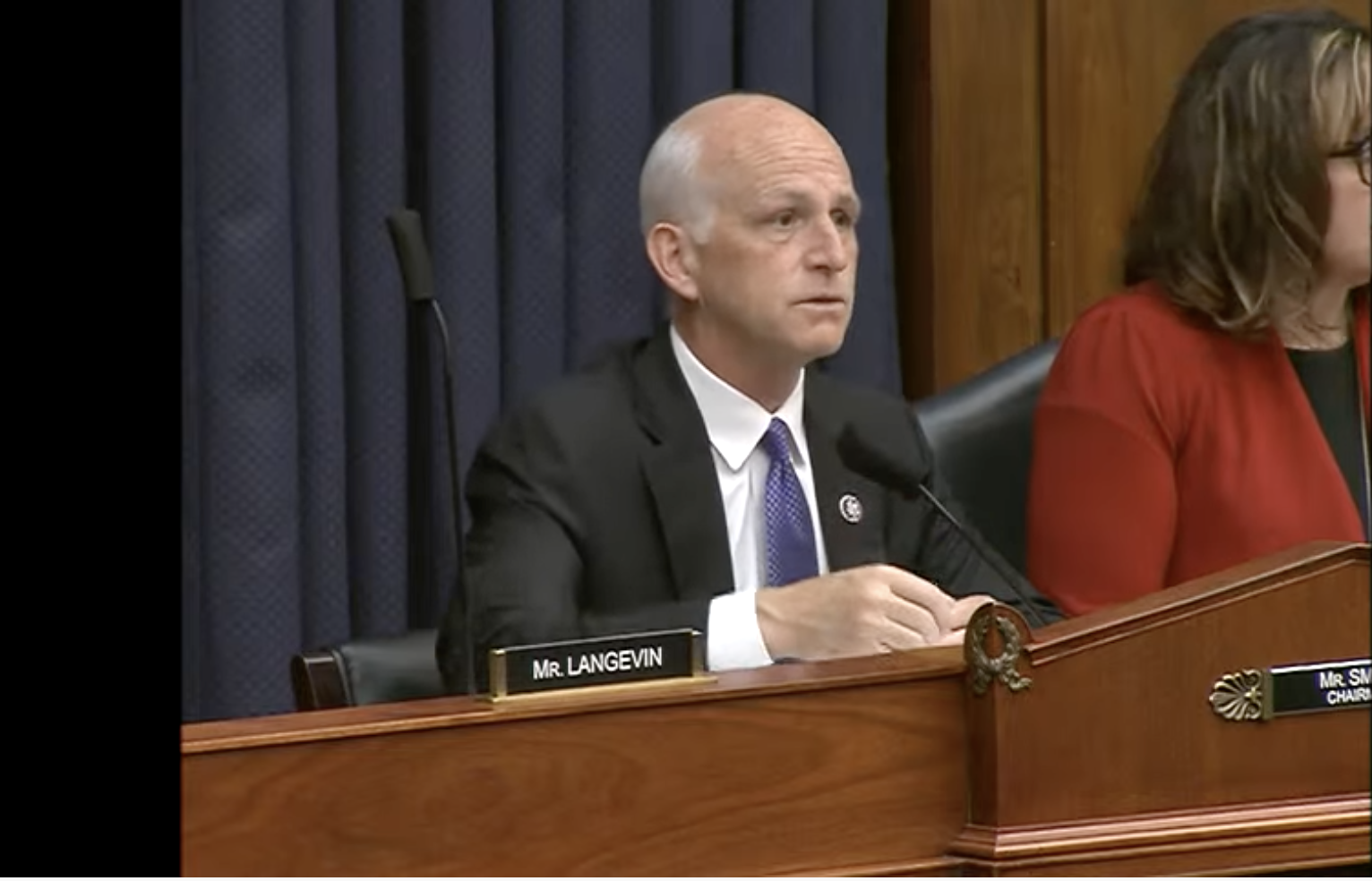Smith: “While it is encouraging to see an increase in research and development across the portfolio, much of the request is for systems that have been called ‘big juicy targets'”
WASHINGTON — U.S. Space Force technology investments was one of the topics discussed June 16 at a hearing of the House Armed Services Committee, which held a three-hour session to review the Department of the Air Force budget request.
Chairman Rep. Adam Smith (D-Wash.) noted that this is the first year the Space Force has “control of its own budget process” and raised some concerns about the proposal.
Testifying at the hearing were Acting Secretary of the Air Force John Roth, Air Force Chief of Staff Gen. C.Q. Brown and Space Force Chief of Space Operations Gen. John Raymond.
The Biden administration is seeking $17.4 billion for the Space Force in fiscal year 2022 — more than a $2 billion increase compared to 2021. The Pentagon says more money is needed to counter offensive weapons developed by China and Russia to destroy or disable U.S. satellites.
Smith said his committee agrees that the Space Force has to invest in new capabilities to defend U.S. satellites. But he is concerned that the budget funds mostly legacy programs and not enough cutting-edge technologies.
“While it is encouraging to see an increase in research and development across the portfolio, much of the request is for systems that have been called ‘big juicy targets,’” Smith said.
Similar comments were made last month by Rep. Jim Cooper (D-Tenn.), chairman of the HASC strategic forces subcommittee. Cooper questioned why billions of dollars in the Space Force budget are for satellites that the vice chairman of the Joint Chiefs of Staff Gen. John Hyten criticized for being too big and expensive, making them attractive targets for enemies.
Smith also warned that lawmakers will not support spending that grows bureaucracies. “A goal of Congress in standing up the Space Force was to maintain a lean and agile force,” he said. “However, it appears in this budget request we are being asked to authorize new commands, centers, and organizations within Space Force that are counter to that initial vision.”
Following Smith’s statements, Raymond said he agreed that current U.S. satellites are hard to defend and that the Space Force wants to move in a different direction.
“We have to shift to a new architecture, we have to modernize our forces,” Raymond said. “The capabilities that we have in space today are exquisite. They’re the world’s best, they’re expensive, but they’re not defendable.”
Smith pressed Raymond to point at what items in this year’s budget show that there is a shift in priorities. Raymond did not name specific items. He said the plan is to transition to a “more diversified architecture that has resiliency built into it and not bolted on as an afterthought.”
In a diversified architecture, the U.S. would rely on military, commercial and allied nations’ satellites, for example.
“We can leverage a burgeoning commercial industry,” he said. “The other thing that we need to do is o leverage our international partners to a greater extent.”
Raymond said one of the priorities for the Space Force is to support growing military demands for intelligence, surveillance and reconnaissance (ISR) data. The Air Force relies on large spy aircraft to monitor the battlefield but those platforms are vulnerable to air-defense missiles. He said the Space Force plans to invest in space-based ISR.
The Space Force and theAir Force are working to develop small radar satellites to track moving objects on the ground. The project had been classified but Raymond pushed to disclose its existence to allow more participation from the commercial space industry.
Committee members also asked Raymond about Space Force efforts to speed up the acquistion of new technology.
“We’re working that really hard, we have to go faster,” said Raymond. “With the help of this committee we set up a Space Rapid Capabilities Office, they’re just two years old and they are already delivering at speed.”
The Space Force’s main acquisition organization, the Space and Missile System Center, has been reorganized and is moving faster, said Raymond. As an example, he noted that a surveillance satellite that flew to orbit June 13 was developed and launched in less than a year.
